- News
- Reviews
- Bikes
- Components
- Bar tape & grips
- Bottom brackets
- Brake & gear cables
- Brake & STI levers
- Brake pads & spares
- Brakes
- Cassettes & freewheels
- Chains
- Chainsets & chainrings
- Derailleurs - front
- Derailleurs - rear
- Forks
- Gear levers & shifters
- Groupsets
- Handlebars & extensions
- Headsets
- Hubs
- Inner tubes
- Pedals
- Quick releases & skewers
- Saddles
- Seatposts
- Stems
- Wheels
- Tyres
- Tubeless valves
- Accessories
- Accessories - misc
- Computer mounts
- Bags
- Bar ends
- Bike bags & cases
- Bottle cages
- Bottles
- Cameras
- Car racks
- Child seats
- Computers
- Glasses
- GPS units
- Helmets
- Lights - front
- Lights - rear
- Lights - sets
- Locks
- Mirrors
- Mudguards
- Racks
- Pumps & CO2 inflators
- Puncture kits
- Reflectives
- Smart watches
- Stands and racks
- Trailers
- Clothing
- Health, fitness and nutrition
- Tools and workshop
- Miscellaneous
- Buyers Guides
- Features
- Forum
- Recommends
- Podcast
feature
The evolution of gravel bikes: what's changed in the past decade?
Having tested one of the first gravel-specific bikes back in 2013 - the Kinesis Tripster ATR - and built it up again very recently, I thought it would be a good opportunity to compare it with the current Tripster, now in its third iteration. So, how have gravel bikes evolved in the last eight years?
> 19 of the best 2021 gravel bikes & adventure road bikes
Over the years I’ve tested a few gravel bikes, but the first Kinesis Tripster ATR v1 was the first. Back then it wasn’t called the v1 because there weren’t any other versions. There weren’t many gravel bikes full stop.
> Review: Kinesis Tripster ATR frameset
In 2013 when the Tripster launched, the concept of a gravel bike—a drop bar bike with a longer wheelbase, more relaxed geometry and space for big chamber tyres—was new. Until that point drop bar bikes for rough surfaces were cyclocross bikes, with fast handling usually designed around the 33mm maximum tyre size that the UCI imposed on races.
> Review: Kona Rove LTD 2021
Looking back through the archives, bikes like the Kona Rove and the Salsa Warbird, really the first commercially available gravel bikes, were on the market by the time the Tripster landed. But the Kinesis Tripster is a bike that was there at the very birth of the gravel movement.
> Review: Kinesis Tripster ATR v3 frameset
Frame and fork design
Geometry
First, let's start with what hasn't changed. In terms of the actual geometry of the frame, the Tripster ATR hasn’t moved on a great deal from the original bike. What differentiates a gravel bike from a cyclocross bike? Well, like anything in cycling, it’s a spectrum rather than separate camps.
Some bikes like the Tripster feel like they’re approaching from the road side, while others, for example the Merida Silex, take their design cues from mountain biking. Generally though, you're looking at a bike that’s more relaxed and a bit longer.
The v1 Tripster frame in the big size has a 71° head tube and a 1062mm wheelbase, with a stack-to-reach ratio of 1.62; the higher that number is, the more upright the bike will feel. For comparison, race and sportive bikes are generally in the 1.4 to 1.5 range.
If you compare the geometry to a modern cyclocross bike such as the Cube Cross Race Pro, the head tube on the Cube is a couple of degrees steeper, and the wheelbase about 25mm shorter. This translates into a bike that’s more agile in the twists and turns of a race, while a gravel bike is a better companion for longer and less technical stuff. That’s not to say you can’t mix and match though, as I’ve raced cyclocross on the Tripster v3 and I’ve ridden the Dirty Reiver on a cross bike. Bikes are versatile.
Axles
Originally the Tripster was quick release at both ends. Thru-axles are pretty much ubiquitous on gravel bikes and disc brake road bikes these days, except at the very low end of the market. Bikes like the Claud Butler Primal still get quick releases, but back in 2013 that was just what you got on your drop bar bike.
In the middle of the decade there was a bit of to-ing and fro-ing and arguments about whether 15mm or 12mm was better at the front, with the 15mm standard coming over from mountain bikes; nowadays you’re likely to have 12mm through axles front and rear though.
Are thru-axles an improvement? Yes, in the sense that you’re using a mechanical interface for locating the wheel rather a friction system that relies on your arm strength to get the lever nice and tight. That means you can’t really mislocate the wheel, which is good when disc brakes rely on such tight tolerances. That being said, I’ve never really had a problem with the quick release on the Tripster v1.
Bottom Bracket
Not much has changed here on the Tripster. You get a threaded 68mm bottom bracket with external cups, which is simple to work on and very durable; the only difference is that the shell has been made a bit bigger to allow Di2 wires to run inside the frame if you’re using a chainset with a 30mm axle.
There were of course many bottom bracket standards in 2013, and there are probably even more standards now. Lots of gravel bikes use PressFit bottom brackets and currently there’s a move in road towards the T47 standard, which uses similar dimensions to the PressFit standard but with threaded bearings. Some gravel bikes such as the Santa Cruz Stigmata have moved to T47, and I’d expect that trend to continue.
Mounts
The v1 Tripster is quite traditional: you’ve got bottle bosses, rack and mudguard mounts and that’s it. If you were looking at carrying loads back in 2013 you were probably thinking about panniers, too. If you consider the standard bikepacking setup of a big seatpack, a frame bag and a bar roll, all of those things existed but they weren’t widely available.
2013 was the year Apidura was formed, and in the few years following there was an explosion in bikepacking gear. But if you look at footage of, say, the first Transcontinental race back in 2013 you’ll see a fair few panniers in amongst the seatpacks.
> Your complete guide to bikepacking
The new Tripster has upper and lower mounts for bottles, a third cage mount under the down tube, and the fork has bosses for big cages so you can mount dry bags.
That’s pretty much the standard these days, although some bikes like the Fairlight Faran hedge have fittings for panniers and for cages too, meaning there are a whole lot of mounts.
> Video: Fairlight's new Faran 2.0 adventure bike
Not every gravel bike is designed for big loads obviously, but the Tripster through its three iterations has moved towards bikepacking from the original 2013 bike, which you’d maybe call a ‘road plus’ bike these days. It’s probably somewhere between the current Tripster and the Kinesis GTD, which wasn’t in the range back then.
That push towards more of an off-road bike has led to a beefed-up frame; there’s about 200g more metal in the newest Tripster than there was in the original version. The ride of the bike has changed slightly as a result; the first generation Tripster definitely feels more like a road bike, and the V3 is a better bike on tougher terrain.
Braking
Disc mounts have changed too in the lifespan of the Tripster. The original Tripster had an IS (International Standard) mount that you bolted the post mount adapter on to. Nowadays you’ll probably not find anything that isn’t a flat mount, both at the front and the back.
The v1 Tripster also ran the disc on the outside of the rear triangle, in the manner of mountain bikes of the time. That disc mount moved inboard, to sit on top of the chainstay, on the second version of the frame, and that’s now the almost ubiquitous standard.
Flat mount looks a bit neater but in terms of the performance of the brakes, there hasn’t really been a huge amount of progress. Those original brakes were pretty good, if a bit more fiddly to get right than the current crop.
The new GRX groupset is flat-mount only, though if you’re building an older frame like this you can still use the old Ultegra post-mount callipers.
Aerodynamics
Of course, the Tripster ATR has evolved over the last decade; but that’s obviously not the whole story of gravel. This is still a reasonably traditional bike in many ways, and the gravel scene has expanded in many different directions.
One of those ways is aerodynamics and integration. In that respect the evolution of gravel bikes has mimicked what’s happened in road bikes. Back in 2013 bikes like the Felt AR and the Scott Foil were already well-established. It wasn’t long before gravel bikes were following suit to milk those marginal gains.
The 3T Exploro (above), which first appeared in 2016, is probably the defining bike of 'aero gravel', and it was very much an outlier when it launched. Did us normal riders need to be aero on our gravel rides? Probably not then, and probably not now; but now there are loads of them. Recently we’ve seen bikes like the Scott Addict Gravel and the Cervelo Áspero take integration to the same level that you see on top-end road bikes. It’s not just the top-dollar brands either; new bikes like Ribble’s Gravel SL are bringing that full integration down in price, although that’s still a reasonably pricey bike.
It’s definitely a trend we’ll see continue, although I think there’s always going to be a place for titanium in gravel, because its material properties really lend themselves to a frame that feels quick on the road and comfortable off it. Plus of course, it’s really easy to clean!
Cable routing
When I originally built up the Tripster v1, it was with Shimano’s original Ultegra Di2 Disc groupset. That was in the days when many bikes were still externally-routed, and the Kinesis was no exception. The Di2 battery went on the down tube and the control wire from the levers to the mechs was in a stick-on conduit on the bottom of the down tube.
If you were running a mechanical groupset, you got the classic barrel adjusters and routing under the bottom bracket. The rear disc hose goes along the top tube, at a time when not nearly as many people were strapping a frame bag on there.
From version 2 the Tripster cable routing went internal, although even now bikes like the Enigma Escape and the Fairlight Faran continue with fully external cabling, which is easier to fix in an emergency and functionally works just fine. One of the reasons for the switch was the fact that groupsets were changing. It wasn’t long before Di2 offered an internally-routed option, and now all Di2 groupsets need frame access to put everything inside... this has necessitated some reasonably drastic and warranty-voiding alterations to the v1 bike that I won’t go into here!
Chainrings
We've also seen a move away from the double chainring. SRAM Force CX1 launched in 2014 and was the first groupset to offer a single ring at the front and a wide cassette at the rear on a drop bar bike, bringing the tech over from mountain biking. Originally it was aimed at cyclocross, because losing the front mech meant better mud clearance, but it very soon found its way onto gravel bikes. 1x is now hugely popular on gravel bikes, even more so when Shimano finally joined the party with the release of GRX in 2019.
1x meant one unused mount, and Di2 meant two, so the more configurable internal ports kept everything neater. It’s not the only option though; the Fairlight Faran uses a modular system of 3D-printed guides for the cables so there’s nothing left spare, with the Di2 cables running internally if required.
By the time the third Tripster landed, fully wireless gears were also available in the form of SRAM’s AXS groupset, meaning even less need for cabling.
Wheels
In 2013, your road wheels were 700c unless you were on a touring bike, when you might have 26 inch wheels from a mountain bike. With the 33mm cyclocross restriction for tyre width, it was unusual to find 700c tyres much bigger than that; anything above 35mm was pretty rare. The v1 Tripster has enough room for a 40mm, 700c tyre, and it was designed solely around 700c wheels.
It’s fair to say that’s all changed. The bike that did the most to change it was probably the Cannondale Slate in 2015. It wasn’t a bike that was a particular commercial success, but it almost single-handedly redefined what a gravel bike could be, with a Lefty suspension fork up front and 650b wheels. The 650b standard wasn’t in any way new; you’ll find 650b wheels on old French touring bikes and tandems, and it had also started to gain ground in mountain biking, with Nino Schurter winning a world cup event on the mid-sized wheels for the first time in 2012.
A 650b wheel with a 47mm tyre is effectively the same diameter as a 700c wheel with a 23mm tyre; there’s no gearing changes to worry about, and it's masses more comfort from that bigger air chamber. As the two wheel sizes are interchangeable, and disc brakes mean there’s no worries adjusting brake position, most gravel bikes now cater for both sizes.
From v2 onwards Kinesis upped the 700c clearance to 45mm, taking advantage of the fact the growing gravel market meant a much wider tyre choice, with tyres like the 43mm Panaracer GravelKing that were appearing.
> 29 of the best gravel bike tyres
> Review: Panaracer GravelKing SK tyre
As for 650b wheels, the v2 frame could take up to a 50mm tyre, making it perfect for new semi-slicks like the 47mm WTB Horizon. Those bigger chamber tyres also make it a lot easier to run tubeless.
Road tubeless wasn’t new even in 2013; I tested my first set of road tubeless tyres, the Hutchinson Fusion 2, as far back as 2009. But as tyres have got larger and pressures have dropped, tubeless makes more sense; I don’t think I’ve run a tubed tyre on a gravel bike since about 2015, and these days most gravel bikes come with tubeless-ready setups.
Suspension
That lefty fork on the Slate continues to evolve on Cannondale’s Topstone, and it’s just one of the options to add a bit of suspension if you’re finding the going a bit uncomfortable. There’s Lauf’s leaf-spring fork, and both Fox and now SRAM with the new XPLR groupset are offering front suspension.
At the back there are options like the Moots Routt YBB with built in rear shock, and again the Topstone, which claims 30mm of travel at the back from just the carbon layup and a single pivot. Even the venerable Thudbuster seatpost has had a lightweight road/gravel makeover in the guise of the eeSilk. Suspension will surely continue to be a major trend over the coming years.
6 ways that gravel bikes have improved road bikes
A lot of stuff has changed... but what hasn’t changed though, is that the original Tripster was a brilliant bike to ride, and it still is today!
Dave is a founding father of road.cc, having previously worked on Cycling Plus and What Mountain Bike magazines back in the day. He also writes about e-bikes for our sister publication ebiketips. He's won three mountain bike bog snorkelling World Championships, and races at the back of the third cats.
Latest Comments
- pockstone 25 min 30 sec ago
At the heart of great comedy lies truth.
- brooksby 27 min 33 sec ago
"I'm so sorry, I seem to have knocked that mirror. … I'm sorry, I seem to have done it again. And again."...
- Cugel 37 min 32 sec ago
The "more cycling infrastructure" lobby is fixated on their supposed "solution" to the dangers of bad driving, despite an overwhelming amount of...
- Car Delenda Est 1 hour 18 min ago
If it rests on intent then the lock is fine if it's on your own property, you can't really argue the cyclist was eagerly waiting for their bike to...
- brooksby 1 hour 38 min ago
I read that 'article' earlier on....
- David9694 2 hours 40 min ago
Notwithstanding its collapsing circulation, I still get it quoted to me as a source of news and information in my local Comments section. If I...
- hutchdaddy 3 hours 13 min ago
It's clearly a shit car, you won't get your cycle in the back of it and it won't have a CD player.
- essexian 4 hours 31 min ago
Before I had even said this persons home address, my wife said upon hearing the story: "He's from Loggerheads isn't he...."
- Rekrab 13 hours 34 min ago
MORE LANES, MORE LANES!!!!
- Simon E 13 hours 40 min ago
The numbers don't tell anything like the whole story....



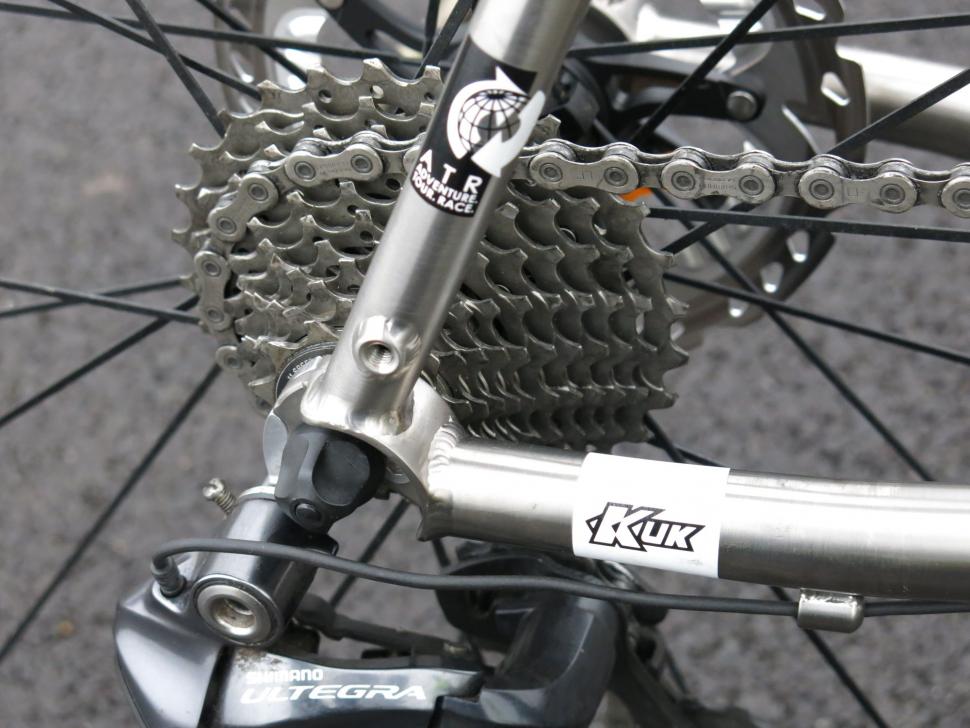
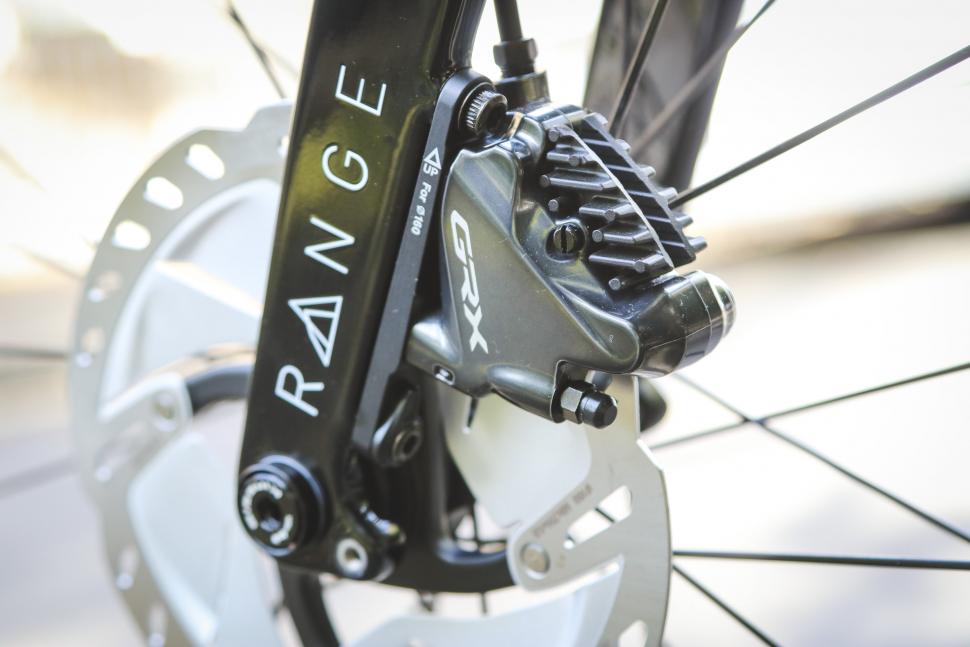
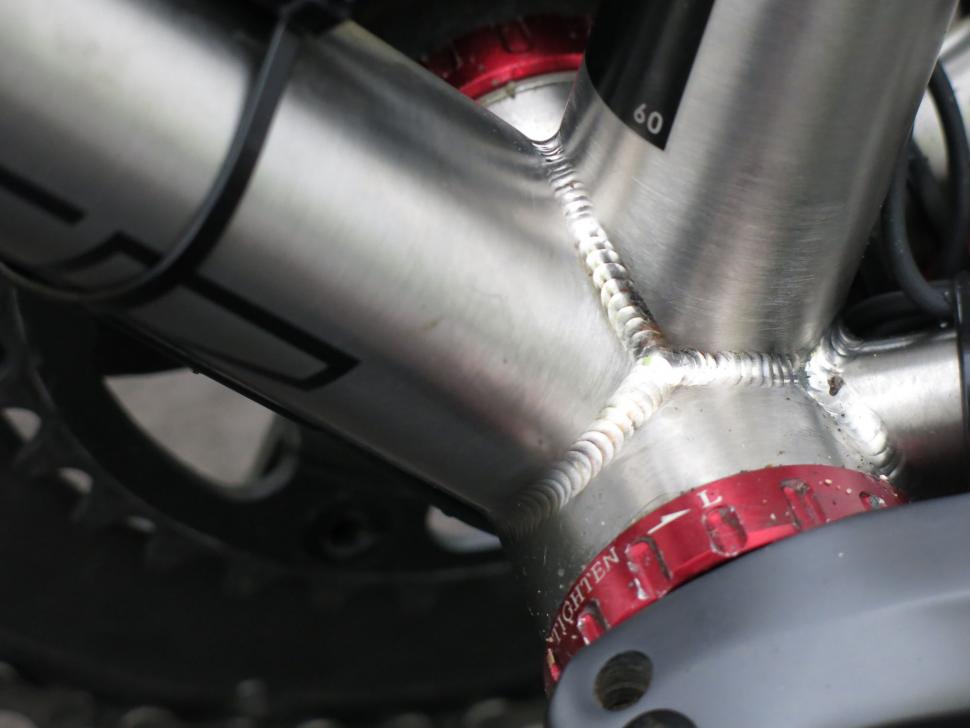
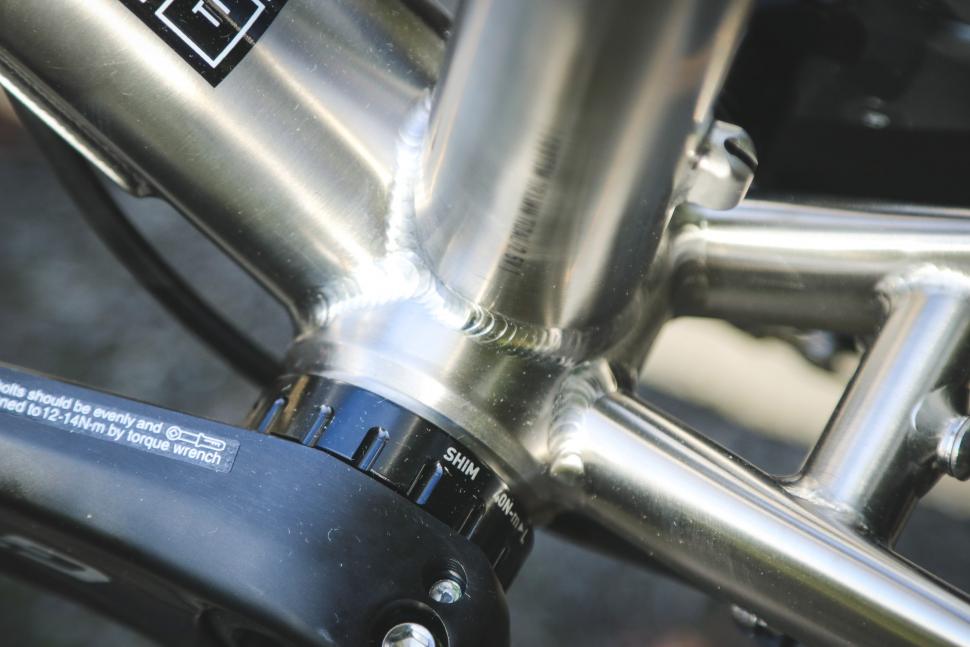
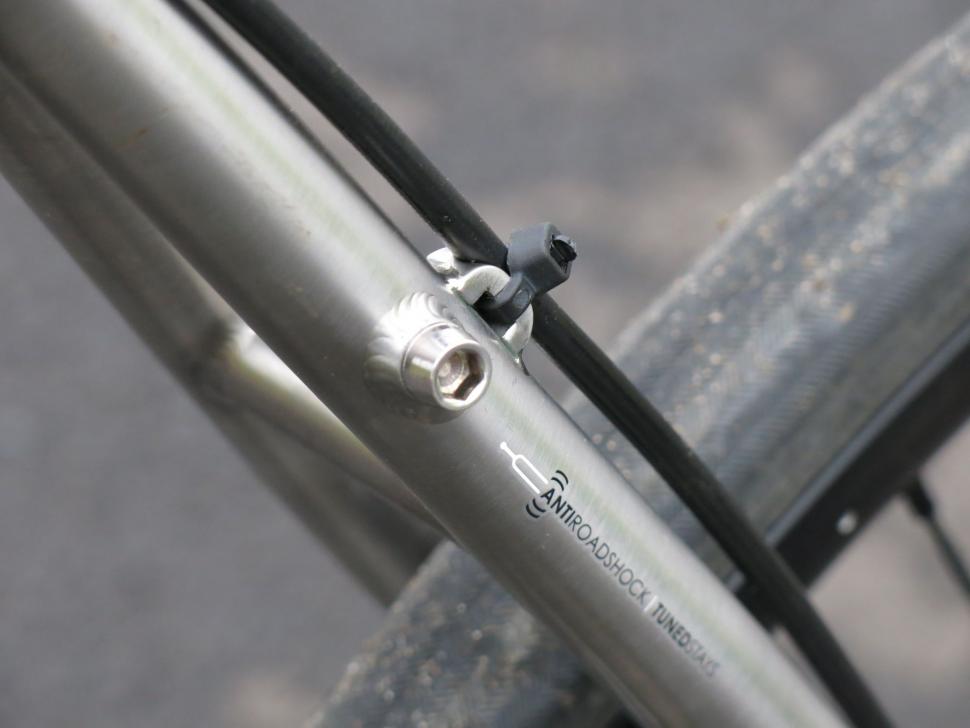

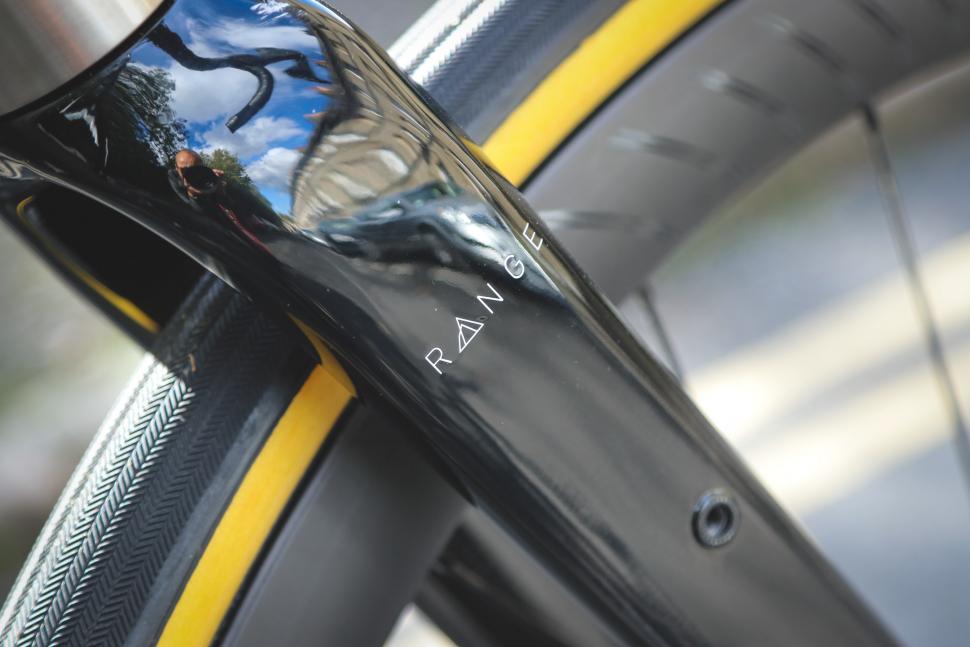












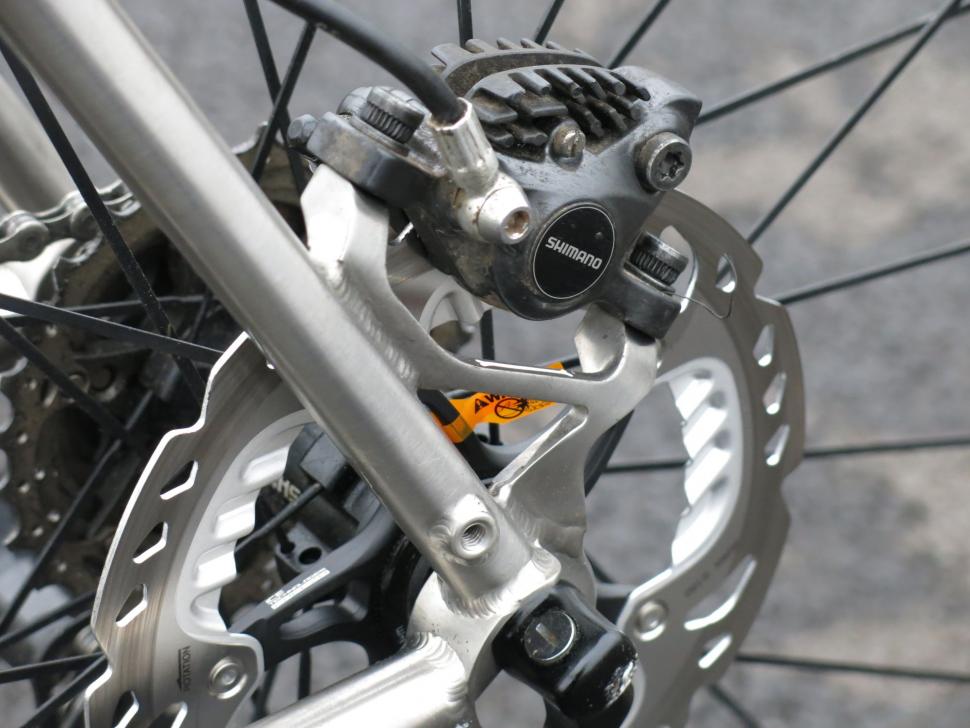
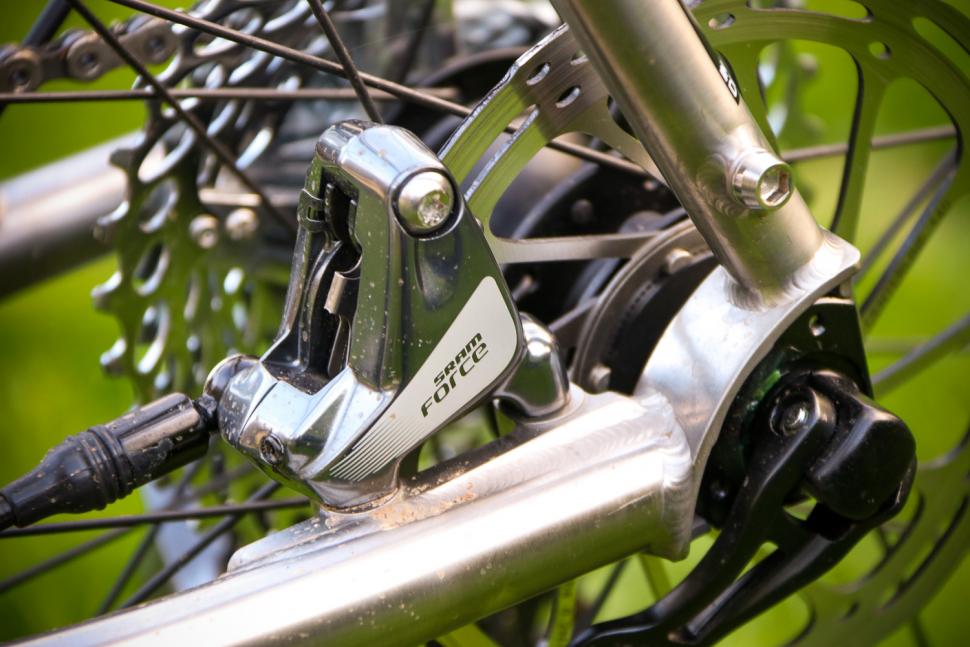
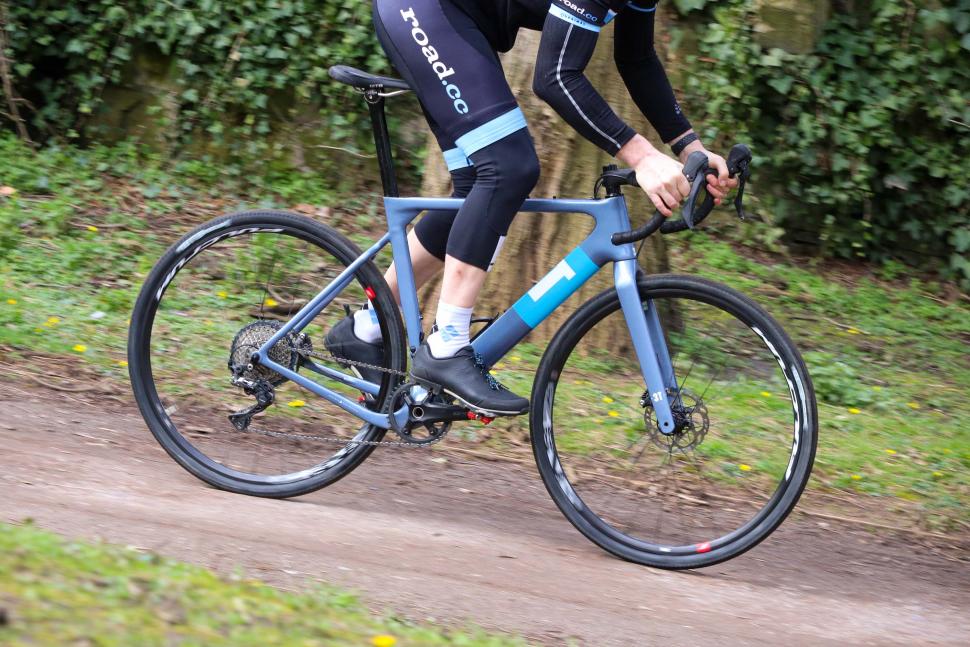
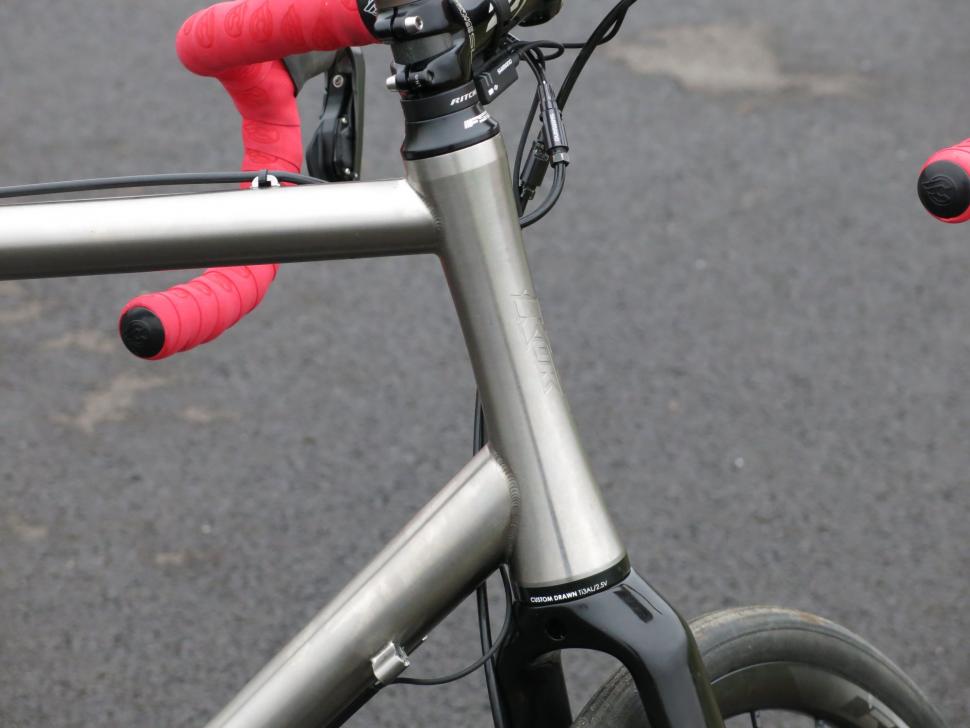

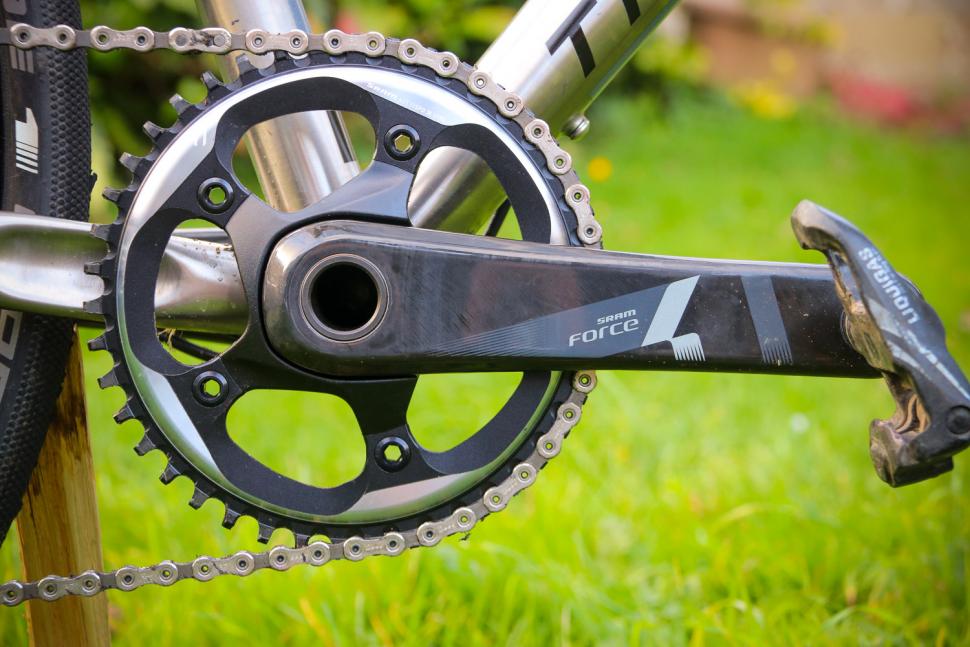
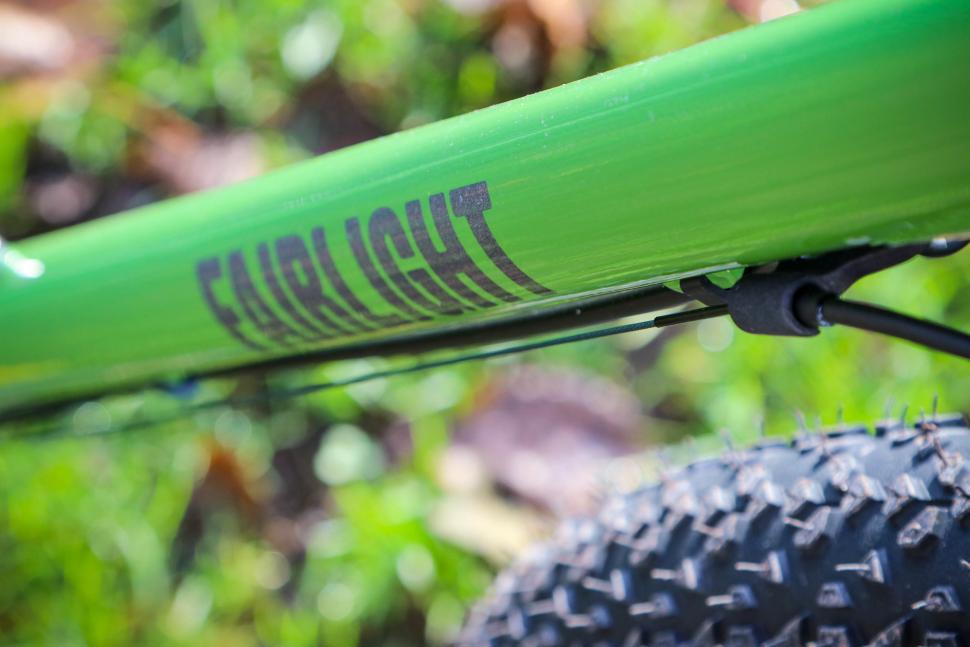
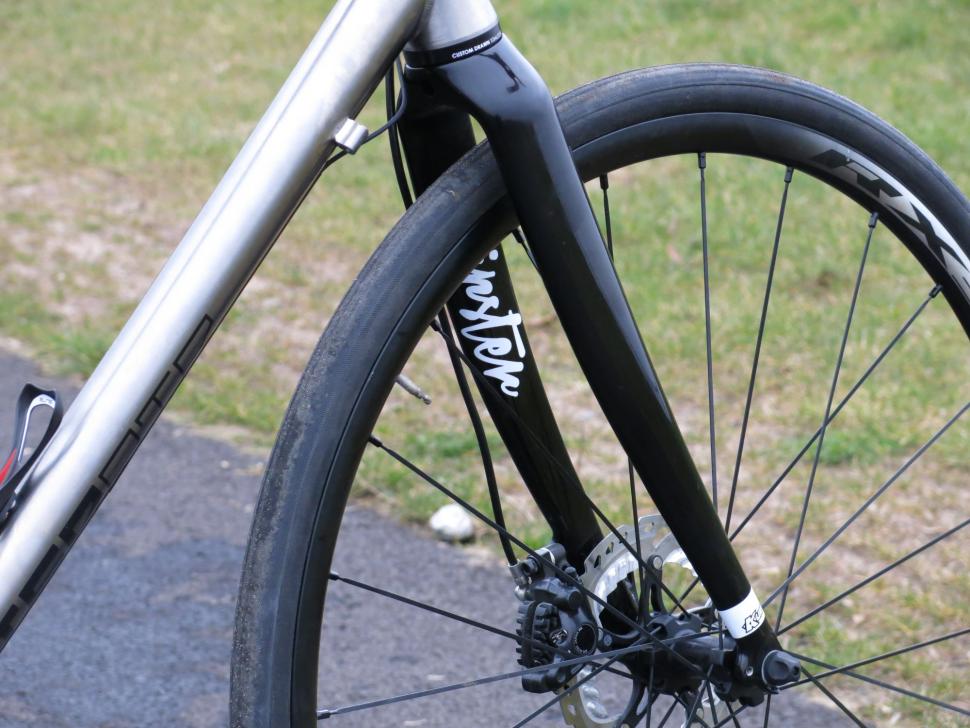

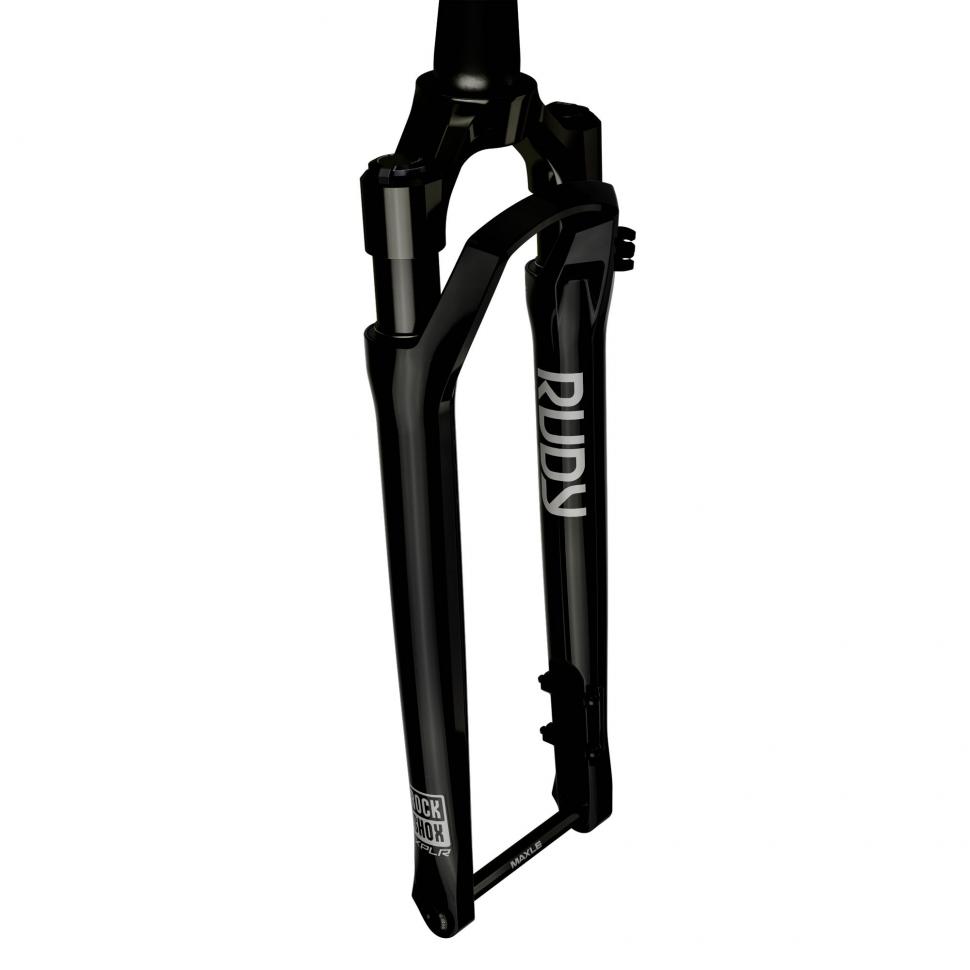

Add new comment
1 comments
Thank you for the comparison, really liked it. What strikes me is how little the overall design of a Ti gravel bike has changed. The most significant change seems to be the brakes where flatmount killed off postmount. I could happily ride that V1 tripster and never look back. Really nice frame, too.